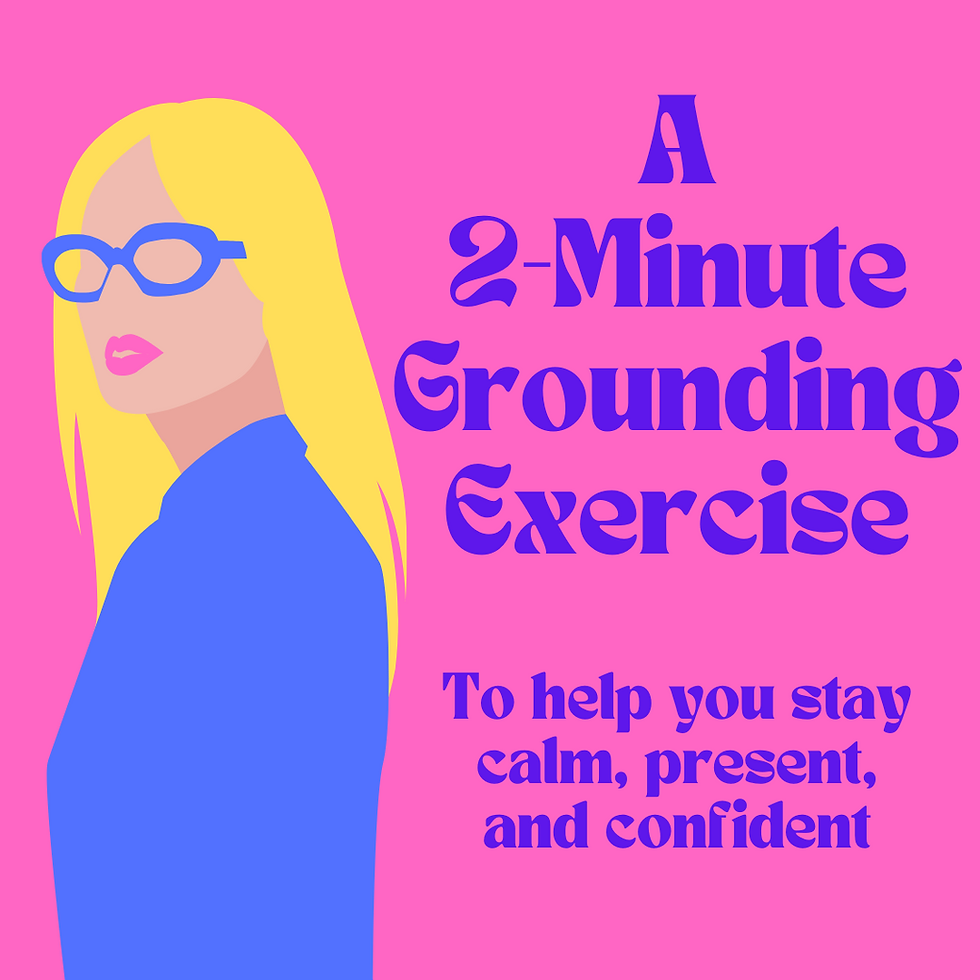Let Your Presence Speak: 5 Small Body Language Shifts That Make a Big Impact
- jilanncarlson

- Jun 27
- 3 min read
Updated: Jun 28

Have you ever walked away from a conversation thinking, “Why didn’t that land the way I hoped it would?” You said all the right words, but something still felt… off.
Chances are, it wasn’t your message. It could easily be your body language.
I recently listened to a fascinating episode of the Craig Groeschel Leadership Podcast on this very topic, and it struck a chord so deeply that I decided to do a full episode on it myself. (You can listen to it here).
As someone who has worked hard to become more comfortable in public speaking, I know how easy it is to let the nerves take over. I’ve spent a lot of time watching great communicators, giving myself solid “head talk,” and trying to find joy in the moment rather than fear. I'm still growing, but I feel far more confident than I used to.
Wanna know one of the most surprising things I’ve learned?
Even if your words are strong, your body might be telling a different story.
Why Body Language Matters for Leaders
Research shows that over 60% of communication is nonverbal. That means people are often reading your posture, gestures, facial expressions, and tone before they ever fully process your words.
If you're a quiet leader, or someone who prefers to lead from behind the scenes, improving your nonverbal communication can dramatically enhance your presence...without needing to become someone you’re not.
And the good news? It doesn’t require a full personality makeover. Just small, intentional shifts. Let's check them out!
5 Small Body Language Tweaks That Build Trust and Presence
Are you ready to strengthen your leadership presence without saying a word? Here are five small body language shifts you can practice right away:
👁️ 1. Make Eye Contact with Intention
Steady (but not intense) eye contact shows you’re confident, grounded, and genuinely present.
Tip: Notice the color or shape of someone’s eyes. It helps you hold your gaze just long enough to feel connected, not awkward. And try the “triple nod” while someone’s talking. It signals, “I’m listening. Keep going.”
💪 2. Open Your Posture
Slouched or closed posture can unintentionally signal disinterest or insecurity. But standing or sitting tall—with shoulders back and chest open—communicates openness and trust.
Try this: Before a meeting or conversation, take a deep breath, roll your shoulders back, and ground your feet. It instantly shifts your energy.
👐 3. Use Hand Gestures Purposefully
Gesturing while you speak actually improves clarity—for both you and your listener. It adds warmth and makes you more engaging.
Pro tip: Watch a few of the top TED Talks and observe how speakers use their hands. Choose one or two gestures you’d like to try out this week.
🔄 4. Mirror with Care
Mirroring someone’s tone, posture, or even pace can create an instant sense of connection and safety.
Be mindful: Keep it subtle—mirror open body language, relaxed gestures, or gentle head nods. Avoid mimicking stress or closed-off cues.
😊 5. Smile
A genuine smile is one of the simplest ways to build trust. Combine that with a warm, calm tone of voice, and you’ll immediately put people at ease.
Leadership isn’t always about speaking louder—sometimes it’s about smiling softer.
Try One Small Shift This Week
You don’t need a dramatic overhaul to show up with strength. Just pick one or two of these small shifts to practice this week. Use them in a team meeting, a one-on-one conversation, or even a casual interaction—and see what changes.
Pay attention to how you feel—and how others respond.
Your presence matters. Even in silence, it speaks volumes.
Ready to Go Deeper?
I talk more about this topic on this week’s episode of the Strength in Numbers podcast:🎧 Listen to “Let Your Presence Speak” here
Until next time—gesture away! And don’t forget, there’s strength in numbers.
—Jilann Carlson



Comments